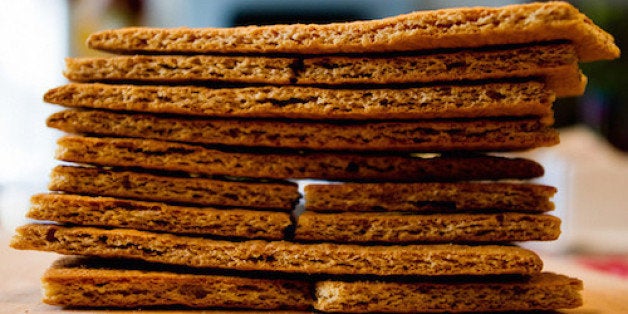
by Kimberly Kohatsu, Managing Editor for the Menuism Restaurant Blog
Graham crackers are one of those foods so innocuous that you've probably never given them much thought. But there was indeed a Graham who lent his name to the Graham cracker, and his story will surely change the way you see the snack from now on.
Born in 1794, Sylvester Graham was a Presbyterian minister who became a leading figure in the temperance movement. Reverend Graham was deeply interested in human physiology and nutrition, and adopted and expanded upon English minister William Metcalfe's ideas of vegetarianism and abstinence.
Photo by Britannica
Graham believed that human lust caused physical maladies, ranging from minor inflictions like headaches and indigestion all the way to grave conditions like cholera, epilepsy, and pulmonary consumption. To Graham, the more immoral the sexual thought or act, the more harm inflicted upon the body. And if you want to know what kind of morality barometer he was judging with, he lectured that masturbation "inflame[s] the brain more than natural arousal," and could result in insanity.
The only way to tamp these depraved carnal urges, he believed, was to adhere to a strict diet that eliminated meat, fat, spices or condiments, coffee, and tea. He also advocated a regular exercise regimen, wearing only loose-fitting, utilitarian clothing, taking cold baths, sleeping on hard mattresses with the windows open regardless of the weather, and abstaining from alcohol and tobacco.
Graham eventually left his ministry and began lecturing, and some of his speeches were published into titles such as "The Young Man's Guide to Chastity" and "Discourses on a Sober and Temperate Life." Adherents of his lifestyle became known as "Grahamites" and opened male-only "Graham boarding house" facilities in New York and Boston. Graham was controversial and his ideas were criticized and sometimes ridiculed, but nothing drew more ire than his anti-commercial stance on bread.
Photo by Library of Congress
The reverend's 1837 "A Treatise on Bread and Bread-Making" called for the use of coarser, unsifted whole wheat flour, because mass-produced bread removed the nutrient-rich layer of bran. The process of refining and whitening flour added unhealthy additives like copper, alum, clay, and chalk. This new white flour, he wrote, led to a "lazy colon." In the face of the era's rapid industrialization, he believed all bread should be homemade, and laid out a process for making whole wheat flour and turning it into "Graham bread." In Boston, Graham was physically attacked by a mob of bakers and butchers who blamed him for declining sales.
Many bakers tried to market Graham's bread, and the source of the first "Graham cracker" is disputed. What is sure is that in 1898, the National Biscuit Company (what we now know as Nabisco) launched its Graham crackers, and achieved even more widespread success in 1925 with the launch of its Honey Maid line, which introduced the sweetness of honey to the bland crisp.
For his part, Graham, a true believer, never promoted any of his products, and was often financially strapped. He died in 1851, and would understandably be horrified at today's food that bears his name - mass-produced, factory-made Graham crackers that contain sweeteners and refined ingredients including that most sinful bleached flour. Tread carefully.
Related Links from the Menuism Restaurant Blog:
• Why Are We "As American As Apple Pie?"
• Who Was General Tso and Why Are We Eating His Chicken?
• The Origins of Fettuccine Alfredo
• Is Mongolian Barbecue Really From Mongolia?
• Why Are Pumpkins Associated with Halloween?
The Strange and Sexual History of the Graham Cracker originally published on the Menuism Blog.
Kimberly Kohatsu is the Managing Editor of the Menuism Dining Blog, the educational arm of Menuism.com, a popular website where a passionate community of foodies rate their favorite dishes and comment on restaurants they've visited. Kim is also a freelance writer and marketing consultant, whose recent dining adventures revolve around ramen, cheeseburgers, and fried chicken. When she's not eating, she's obsessed with all things panda.